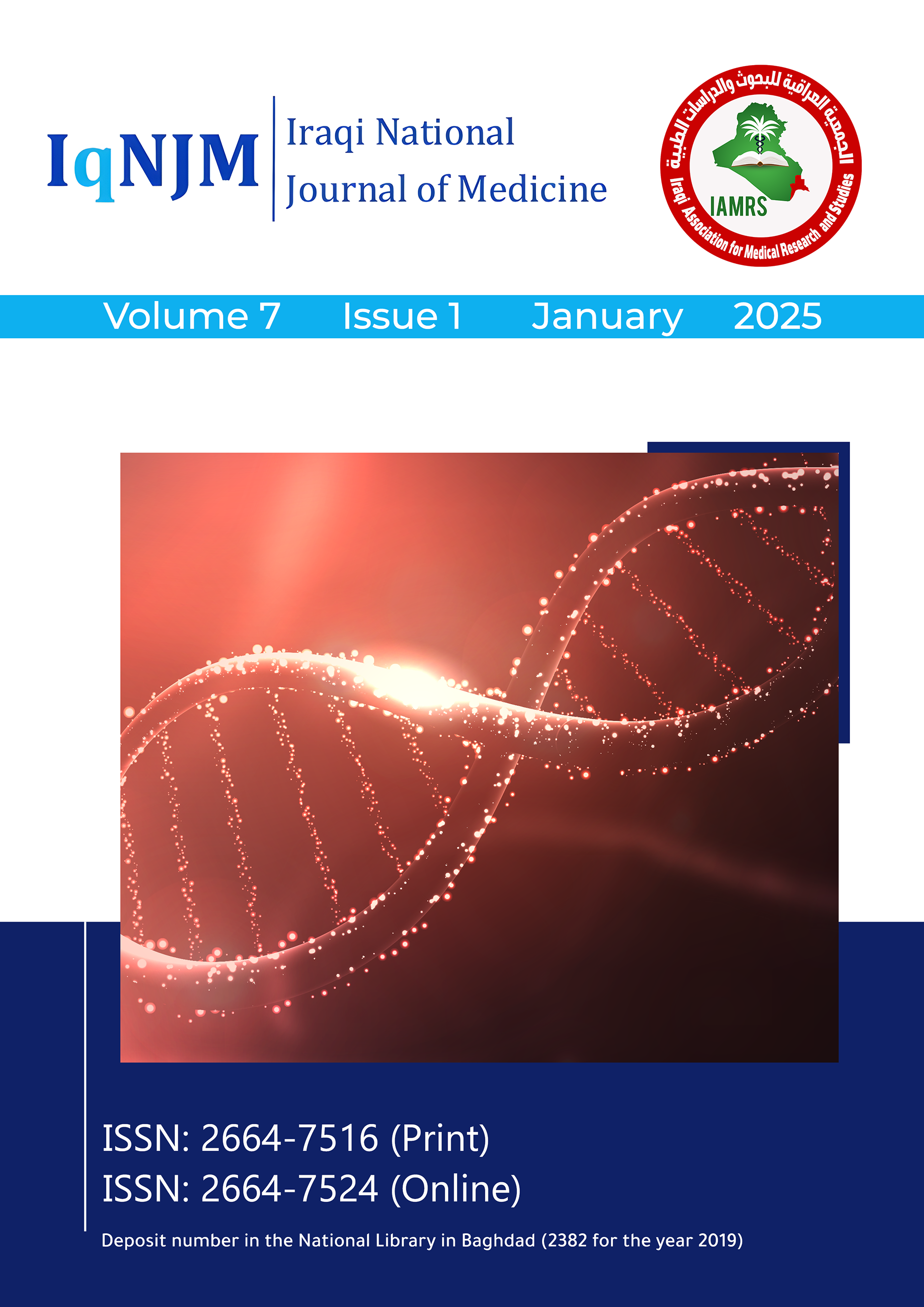Evaluating the outcome of different reconstructive surgical options for the management of shoulder deformity following obstetrical brachial plexus injury due to Erb’s palsy
Main Article Content
Keywords
Obstetrical brachial plexus paralysis, derotation osteotomy, trapezius tendon transfer
Abstract
Background: Obstetrical brachial plexus paralysis (OBPP) refers to an injury to all or part of the brachial plexus occurring at the time of delivery. Injuries associated with the upper brachial plexus are termed Erb’s palsy, while those associated with the lower brachial plexus are referred to as Klumpke palsy. Obstetrical brachial plexus injuries are often associated with large birth weight and shoulder dystocia. Aim: This study aims to evaluate the outcomes of different secondary reconstructive surgical options for the treatment of OBPP Methods: This prospective study was conducted at Basra General Hospital from October 2022 to November 2023. Sixty-eight patients (43 males and 25 females) were included, with 49 patients experiencing right-side involvement and 19 with left-side involvement. All patients had Grade 2 OBPP according to the modified Mallet score. Secondary reconstruction involved subscapularis release for 48 patients, derotation osteotomy for 12 patients with fixation using plates and screws, and tendon transfer for eight patients in the form of trapezius transfer to the upper humerus. Results: In the subscapularis release group, 42 out of 48 patients (87.5%) reported satisfaction with the surgical outcome, noting improvements in their ability to eat and drink. In the derotation osteotomy group, 11 out of 12 patients (81.7%) were satisfied with the result of surgery, while the trapezius transfer group expressed dissatisfaction with the surgical outcome. Conclusion: Subscapularis release surgery is suitable for early and flexible OBPP, yielding satisfactory results, while derotation osteotomy is appropriate for fixed OBPP in toddlers and older children, also demonstrating good results. Trapezius tendon transfer showed unsatisfactory outcomes.
References
2. Mollberg M, Ladfors LV, Strömbeck C, Elden H, Ladfors L. Increased incidence of shoulder dystocia but a declining incidence of obstetric brachial plexus palsy in vaginally delivered infants. Acta Obstet Gynecol Scand. 2023;102(1):76–81.
3. Grahn-Shahar P. Improving shoulder function in brachial plexus birth injury. 2021.
4. Marie-Ange NY, Alexandre M, Kennedy M, Arnaud MOS, Eric NE, Theophile NC, et al. Obstetric brachial plexus palsy of newborns and infants: functional outcomes after rehabilitation by their own parents. Open Journal of Orthopedics. 2022;12(4):212–24.
5. Holland P, Nixon MF. Evidence-based treatment of glenohumeral dysplasia caused by obstetric brachial plexus injuries. In: Alshryda S, Huntley JS, Banaszkiewicz PA, editors. Paediatric orthopaedics: an evidence-based approach to clinical questions. Cham: Springer International Publishing; 2017. p. 297–303.
6. Gutkowska O, Martynkiewicz J, Urban M, Gosk J. Brachial plexus injury after shoulder dislocation: a literature review. Neurosurgical Review. 2020;43(2):407–23.
7. Koehn AR, Waller MN, Stephenson E. Delivery methods. Fetal and neonatal physiology for the advanced practice nurse. New York: Springer Publishing; 2019.
8. Shah H. The paralysed shoulder in the child. Essential paediatric orthopaedic decision making. CRC Press; 2022.
9. Soldado F, Cornwall R. Glenohumeral dysplasia in brachial plexus birth injury. Congenital and acquired deformities of the pediatric shoulder girdle. Springer; 2022.
10. El-Gammal TA, Ali AE-S, Kotb MM, Saleh WR, El-Gammal YT. Long-term evaluation of teres major to infraspinatus transfer for treatment of shoulder sequelae in obstetrical brachial plexus palsy. Ann Plast Surg. 2020;84(5):565–9.
11. Cho AB, Choi HJ, Ferreira CHV, Yoshinobu KL, Bersani SG, Sorrenti L. Shoulder arthrodesis for traumatic brachial plexus injuries: functional outcomes and complications. HAND. 2023;18(1_suppl):6S–13S.
12. Heyworth BE, Fabricant PD. Brachial plexus birth palsy [Internet]. Rockwood and Matsen’s The Shoulder: Rockwood and Matsen’s The Shoulder E-Book; 2021.
13. Terzis JK, Papakonstantinou K, editors. Surgical treatment of obstetrical brachial plexus paralysis: The Norfolk experience2004: Copyright© 2004 by Thieme Medical Publishers, Inc., 333 Seventh Avenue, New ….
14. Van der Looven R, Le Roy L, Tanghe E, Samijn B, Roets E, Pauwels N, et al. Risk factors for neonatal brachial plexus palsy: a systematic review and meta‐analysis. Dev Med Child Neurol. 2020;62(6):673–83.
15. Belabbassi H, Imouloudene A, Kaced H. Risk factors for obstetrical brachial plexus palsy. Mustansiriya Medical Journal. 2020;19(1):30–3.
16. Johari A, Maheshwari R, Maheshwari S. Birth injuries. In: Mauffrey C, Hak DJ, editors. Passport for the orthopedic boards and FRCS examination. Paris: Springer Paris; 2015. p. 419–24.
17. Elkady R, Fekry H. Treatment of posterior shoulder dislocation in obstetric brachial plexus palsy using subscapularis release and tendon transfer. Am Res J Orthop Traumatol. 2017;2:1.
18. Alasadi BMA, Faraj IMA, Alasedy HM. Effect of derotational humeral osteotomy on function of shoulder joint in cases with Erb’s palsy: a clinical evaluation and outcome. Journal of Medical and Surgical Practice (JMSP). 2021;7(02).
19. Rühmann O, Schmolke S, Bohnsack M, Carls J, Wirth CJ. Trapezius transfer in brachial plexus palsy: correlation of the outcome with muscle power and operative technique. J Bone Joint Surg Br. 2005;87(2):184–90.
20. Garcon C, Abdelnour H, Jeandel C, Louahem D, Laffont I, Cottalorda J, et al. Change in shoulder external rotation strength and motion after lower trapezius transfer to the infraspinatus in children with obstetric brachial plexus palsy. Int Orthop. 2021;45:3163–70.


